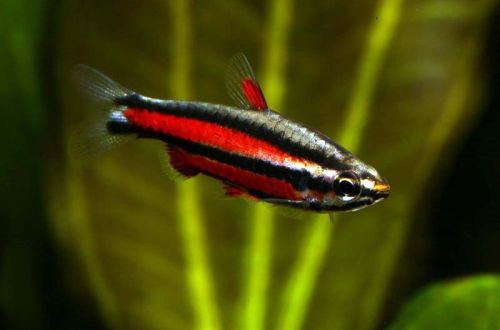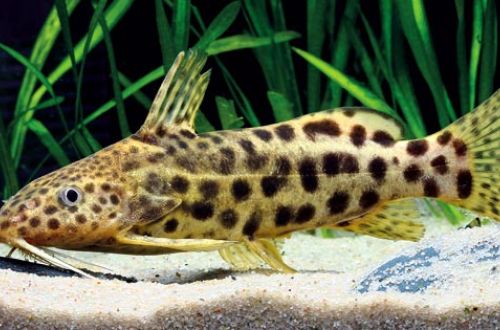
Danio Jaintia
Danio Jaintia, scientific name Danio jaintianensis, belongs to the Cyprinidae family. The fish got its name from the area in which it was discovered – the mountains of Jaintia. Not a frequent visitor to home aquariums, however, its rarity does not mean that the fish is demanding on the conditions of detention. It belongs to unpretentious and hardy species, able to get along with many other fish of comparable size.
Contents
Habitat
It comes from the territory of northeastern India, the state of Meghalaya. The fish have been found in river systems at the foot of the Jaintiya Mountains. The natural habitat is small rivers and streams flowing through hilly areas covered with rainforest. In many places, the currents are fast and even rough, but the fish prefer calmer areas with rocky substrates and dense coastal vegetation.
Brief information:
- The volume of the aquarium – from 70 liters.
- Temperature – 15-23°C
- Value pH — 6.0–7.0
- Water hardness – 1–8 dGH
- Substrate type – any dark
- Lighting – subdued
- Brackish water – no
- Water movement – light or moderate
- The size of the fish is about 4 cm.
- Feeding – any food of suitable size
- Temperament – peaceful
- Keeping in a group of 8-10 individuals
Description
Adults reach a length of about 4 cm. The color is gray, with a wide golden stripe stretching from head to tail. Fins are translucent. Sexual dimorphism is weakly expressed, males are practically indistinguishable from females.
Food
Omnivorous species. They accept most popular feeds in dry, frozen and live form. They can be content with exclusively dry food, if they contain all the necessary vitamins and other trace elements.
Maintenance and care, arrangement of the aquarium
The optimal size of the aquarium for a flock of 8-10 fish is about 70-80 liters. The design is arbitrary, but the combination of dark soil and thickets of aquatic plants located along the side walls of the tank is considered the most acceptable. The lighting is subdued.
A moderate current is welcome to keep the fish in good shape. Any internal filter can provide water movement, in this case it serves as a good addition to its main function.
Keeping Danio Giintia will not require much effort if you maintain high water quality at the proper level. To do this, in addition to the filtration system, it is necessary to carry out several standard aquarium maintenance procedures. This is at least: weekly replacement of part of the water with fresh water, regularly remove organic waste / plaque from the bottom and from the design elements, control the pH and dGH values and adjust them if necessary. It is worth noting that this species does not respond well to high temperatures, its maximum is only 23 ° C, so it can be kept in an unheated aquarium.
Important! The aquarium should be equipped with a lid that will prevent the fish from accidentally jumping out.
Behavior and Compatibility
Peaceful active fish. Given her temperature preferences, the choice of neighbors will be limited. As compatible species, it is necessary to select from among other non-aggressive fish of a comparable size, capable of living in relatively cool water. Prefers to be in flocks of at least 8-10 individuals.
Breeding / breeding
With the onset of the breeding season, which in an artificial environment can last all year round, Danio Giintia scatter many eggs among aquatic plants. The fry appear after 24-36 hours, after a few more days they begin to swim freely. The fish do not show parental care, so a significant part of the juveniles die, becoming a victim of adult fish or from a lack of food. In the conditions of a common aquarium, their survival will be minimal if the eggs are not transferred in time to a separate tank with identical water conditions.
This makeshift spawning tank is usually 20-30 liters in size and is equipped with a simple airlift filter. Lighting and heaters are not required. Arrangement is optional.
Fish diseases
In a balanced aquarium ecosystem with species-specific conditions, diseases rarely occur. Often, diseases are caused by environmental degradation, contact with sick fish, and injuries. If this could not be avoided and the fish shows clear signs of illness, then medical treatment will be required. Read more about symptoms and treatments in the Aquarium Fish Diseases section.





